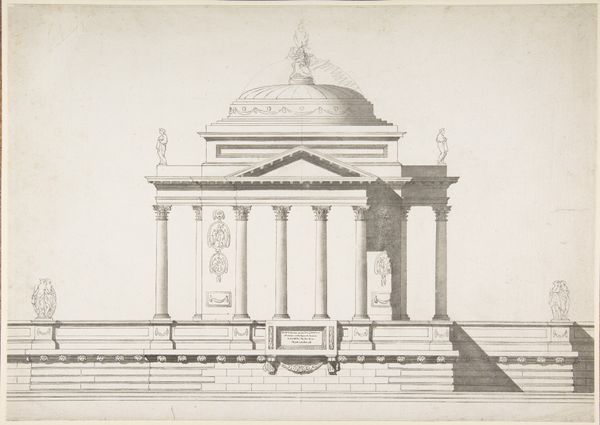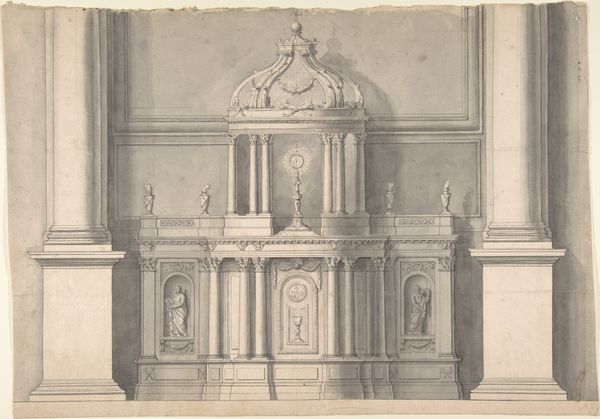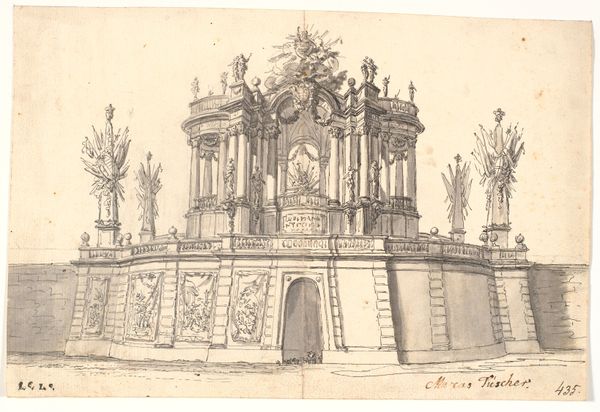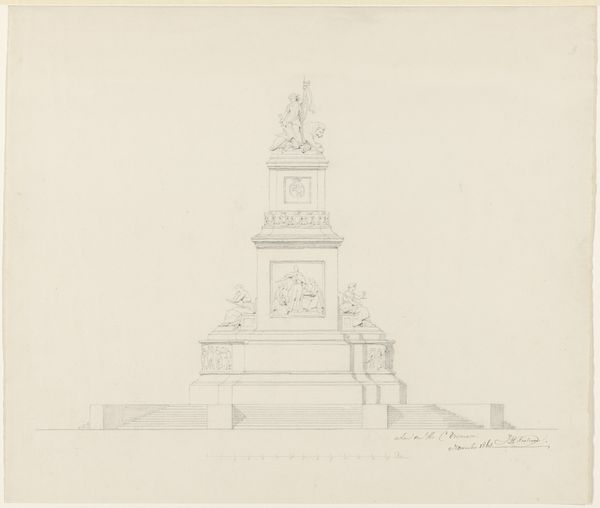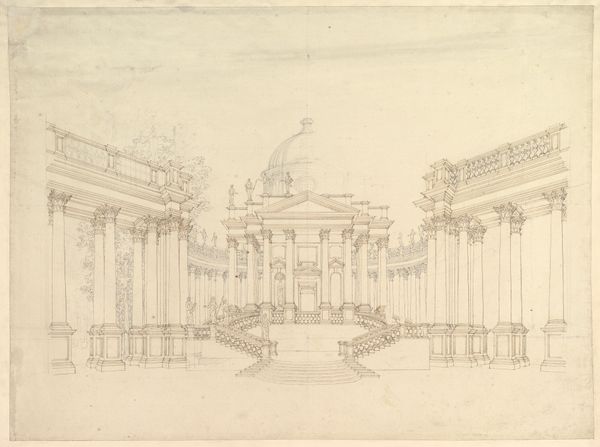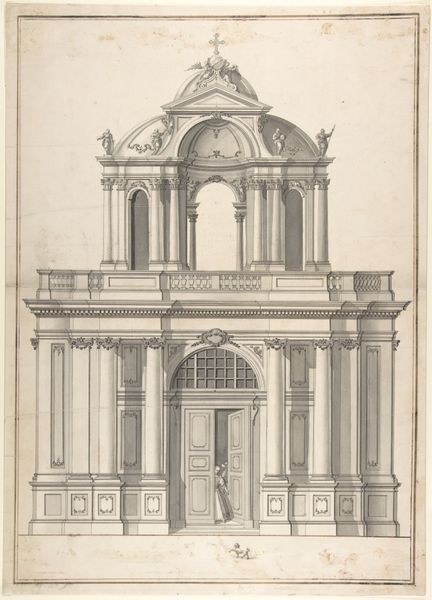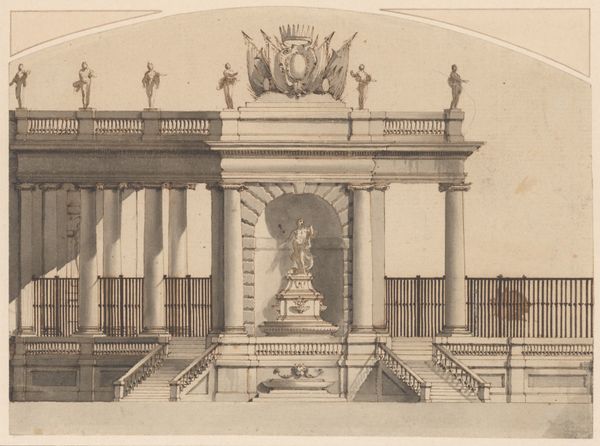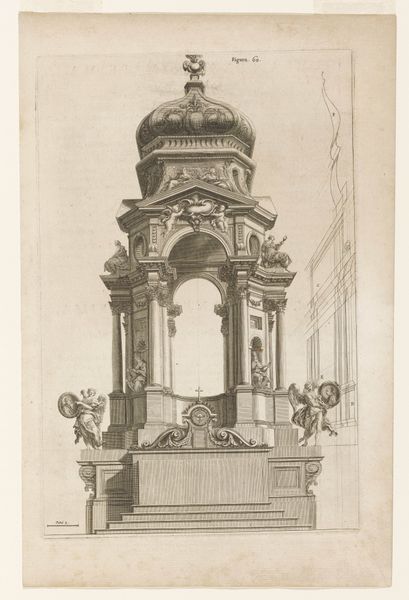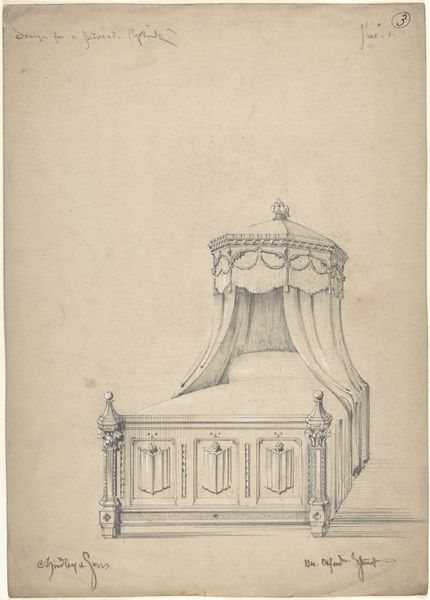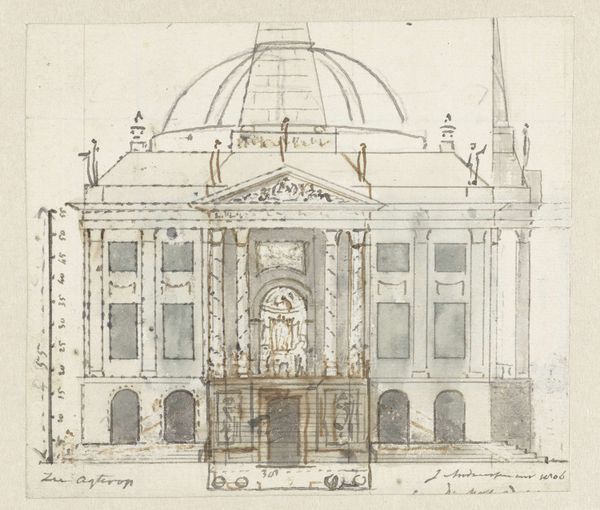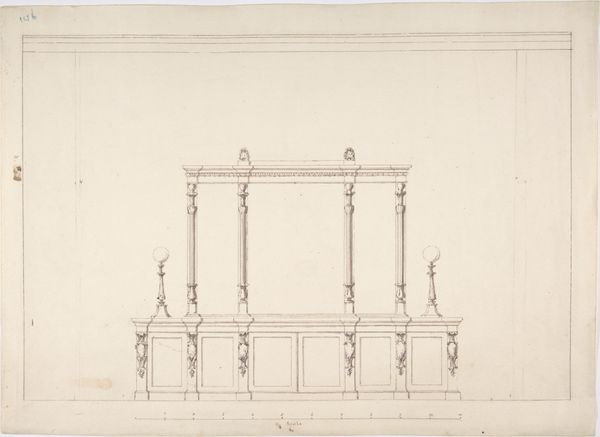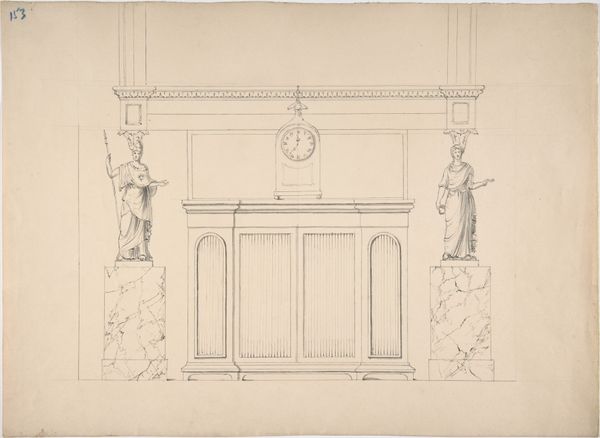
drawing, print, paper, ink, architecture
#
drawing
#
neoclacissism
# print
#
landscape
#
classical-realism
#
paper
#
form
#
ink
#
geometric
#
line
#
history-painting
#
architecture
#
building
Dimensions: sheet: 9 1/8 x 12 in. (23.2 x 30.5 cm)
Copyright: Public Domain
Curator: Here we have Sir William Chambers’ "Design for a Mausoleum," a drawing dating from the late 18th century. Editor: It evokes a feeling of serene grandeur. The meticulous lines and balanced composition create a harmonious effect. Curator: Absolutely. The artist's employment of line is paramount here; consider how its very application delineates architectural space and implies the surrounding landscape with just ink and paper. What do you make of its Neoclassical style? Editor: I find it a study of controlled emotion. While it's intended as a monument to death, the neoclassical architecture references back to a lineage of heroic ideals. Those figures along the roofline are the symbols. Who is meant to find solace here, the deceased or those remembering them? Curator: Chambers' adherence to classical principles offers a formal answer: reason, order, proportion. Semiotically, each component contributes to a balanced whole; there's no excess. The lack of ornamentation underscores its primary purpose. Editor: Yet the mausoleum is placed within an implied natural setting; you see glimpses of trees. How does nature relate to architectural form here? Nature typically invokes chaotic disorder. Is it commenting on our relation to grief? Or does the symmetry of the architectural components speak to humanity's innate tendency toward balance? Curator: A keen point. Chambers plays with tension: geometric precision alongside suggestive organic forms, such as we can just make out on the edge. Editor: In that tension, I see the universality of human experience: imposing geometric structure upon uncontrollable organic life. Curator: Very astute. It appears that Sir William masterfully distilled historical symbolism within an ordered frame. Editor: And that frame, combined with somber ink washes, provokes thought regarding how our ideas of legacy can take form in our mind and in the world.
Comments
No comments
Be the first to comment and join the conversation on the ultimate creative platform.
